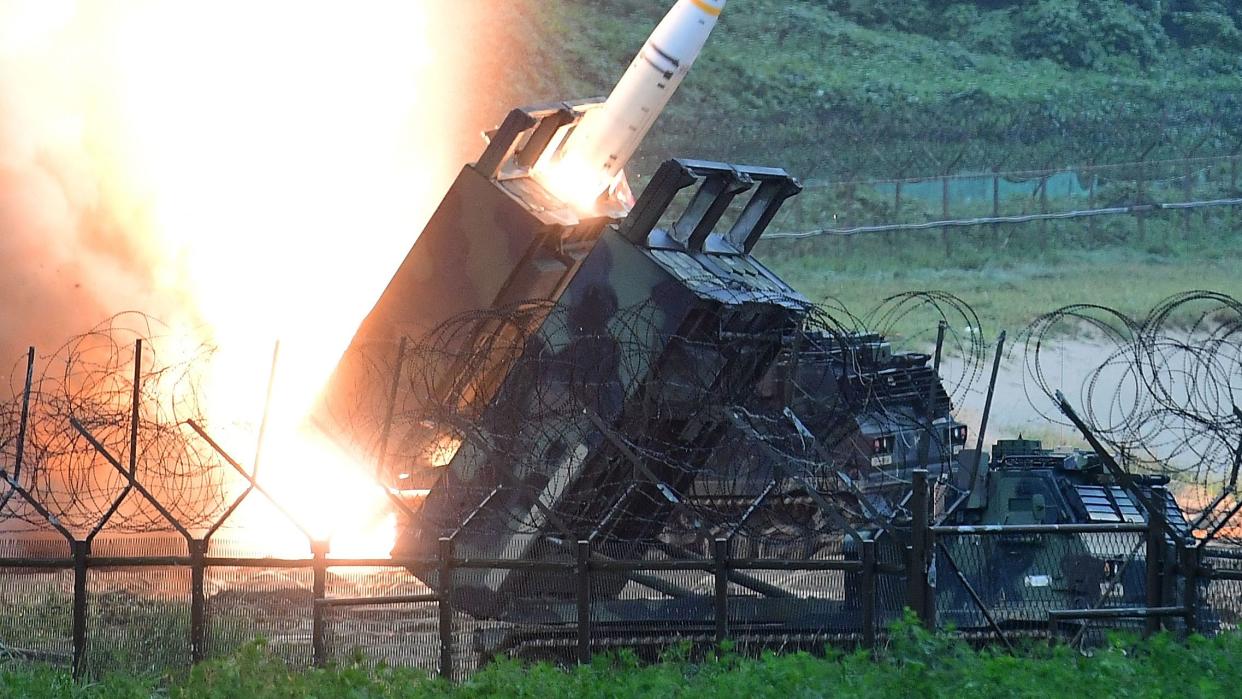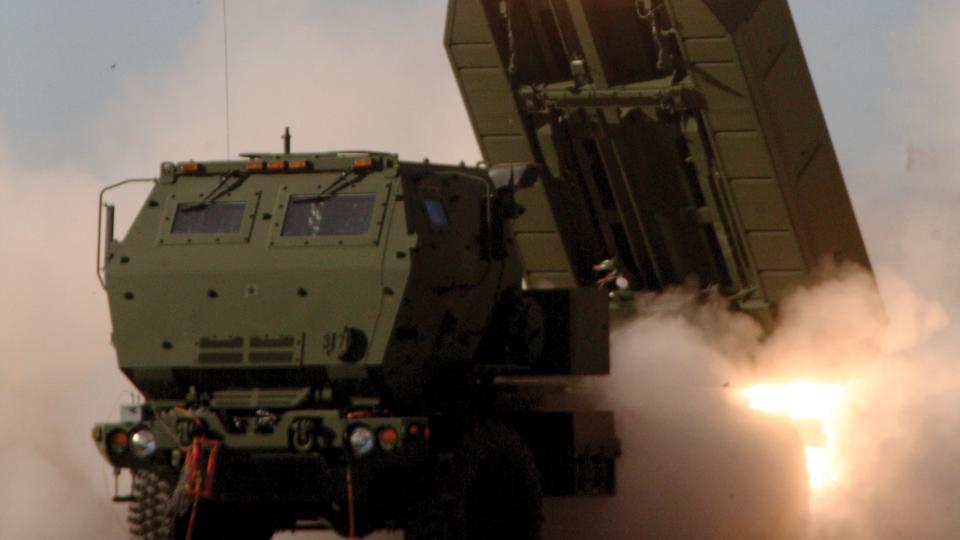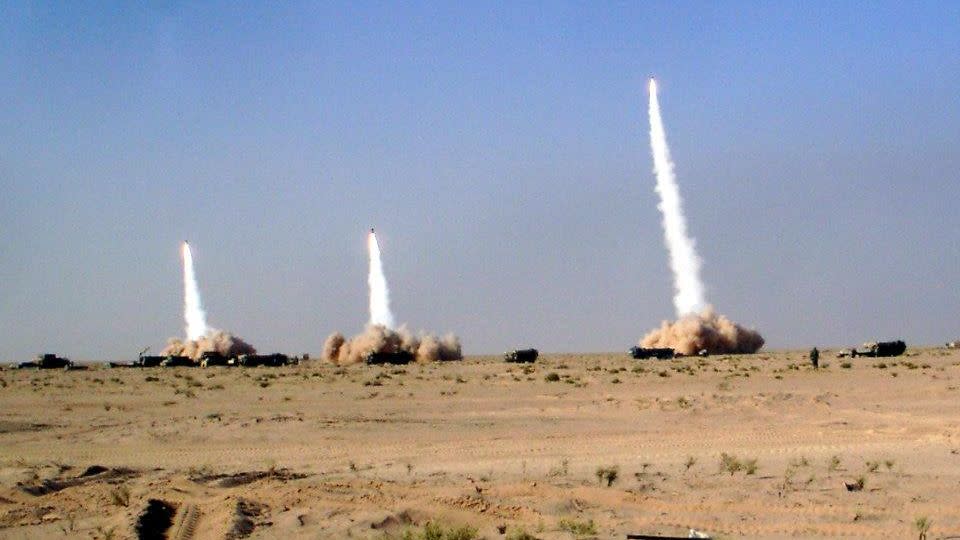Joe Biden Is Probably About to Send These Deep-Strike Missiles to Ukraine

Anonymous insider sources told U.S. media early in September that President Joe Biden’s administration would likely soon announce that the U.S. will transfer MGM-140 ATACMS land-attack missiles to Ukraine. Allegedly, a recently “rediscovered” stockpile of these ground-launched missiles has boosted the appeal of such a transfer, though recently, an Army official denied any ATACMS inventory was actually 'lost' by the U.S. military.
Publicly, though, White House officials have maintained that an ATACMS transfer is “on the table,” but not yet decided, and said they would not announce a transfer of these weapons during Ukraine President Volodymyr Zelensky's visit to New York and Washington this week as Kyiv had urged.
For over a year, Ukraine and its supporters have lobbied for access to this deep strike weapon, compatible with the M142 HIMARS rocket artillery truck and older, heavier tracked M270 MLRS vehicles already donated to Ukraine. Zelensky says that he has discussed supply of ATACMS with Biden on multiple occasions. And while one faction of congressional Republicans staunchly opposes aid to Ukraine, four Republican senators from an opposing faction wrote a letter to Biden urging him to finally donate ATACMS.
Biden’s reluctance to donate the Army Tactical Missile System stems from two concerns. The first is that ATACMS’s chief advantage—its strike range of 190 miles—might enable Ukraine to mount provocative attacks deeper into Russian soil using an American-supplied weapon. As for many other weapons supplied to Ukraine without consequence, propagandists in Russia have (very dubiously) threatened grandiose consequences should ATACMS be donated, such as attacks on bases in Poland and Germany.
More threats from Olga Skabeyeva today:
"Washington is well aware that if the Pentagon supplies Ukraine with ATACMS missiles with a range of up to 300km, Russia has every right to defend itself. That's to say, to strike Poland or the US's Ramstein base in Germany, for example." pic.twitter.com/8hljf4ig6L— Francis Scarr (@francis_scarr) September 19, 2022
However, concerns that Ukraine might employ ATACMS problematically have likely been significantly allayed by the U.K. and France’s delivery of Storm Shadow/SCALP-EG cruise missiles earlier this year, which exceed ATACMS in range. Ukraine has extensively employed these missile, but not on targets on Russian soil (which have instead been struck by indigenous Ukrainian weapons).
The other concern was the limited number of ATACMS missiles produced—just over 4,000, of which around 500 were used in combat and the majority of initial production retired. That means ATACMS donated to Ukraine could dent the U.S. Army’s and Marine Corp’s current stockpile.
CNN claims that Lockheed Martin is building/modernizing 500 new ATACMS missiles per year, likely mostly devoted to fulfilling foreign export orders (see below) with 900 already sold abroad by mid-2023 to Bahrain, Greece, Qatar, South Korea, Poland, Romania, Turkey and UAE. Budget documents suggest M57 missile cost $1.7 million in 2021 dollars, while M57E1s rebuilt from retired M39 missiles cost $1.3 million.
A rediscovered stockpile (if it exists in some form) may ease quantity concerns, and likely consists of retired M39-series missiles designed to release hundreds of cluster bomblets. These M39s could be transferred directly to Ukraine, or the U.S. could donate some of its newer, non-cluster warhead M57 missiles while converting rediscovered M39s into M57E1s to backfill the U.S. military’s inventory.
A wheeled HIMARS rocket launcher ordinarily carries a single, pre-loaded pod laden with six 227-millimeter artillery rockets effective out to 43 miles. The older, beefier tracked M270 MLRS carries two such pods (12 missiles total). But those pods can be swapped one-for-one with ATACMS pods carrying one big 610-millimeter diameter guided missile that can fly 186 miles.
That allows such artillery units to double as quasi-ballistic missile launchers capable of ‘deep fires’ against targets far beyond the frontline, including high-level command posts, airbases, and fuel and ammunition stores, as well as enemy artillery, air defenses, and opposing tactical missiles.
Presently, Ukraine has received or been pledged at least 38 M142 HIMARS trucks, as well as at 18 M270A1s or B1s donated by France, Italy and the United Kingdom that can employ ATACMS missiles. There are also five German M270 MARS systems compatible only with the oldest M39 missiles. The fact that Ukraine already owns these launch vehicles and has experience using them would significantly eases challenges in integrating another type of long-range weapon.
None of these vehicles has been visually confirmed lost in combat, despite Russia’s frequent claims to have destroyed more HIMARS systems than were ever delivered to Ukraine.
How ATACMS works
ATACMS is the U.S. Army’s in-house deep strike weapon for when air strikes are deterred by air defenses or bad weather, or are simply not available fast enough.
Exactly when the Army should use these expensive missiles in place of airstrikes remains much studied and debated. In fact, in two wars in Iraq, the Army has most often targeted ATACMS strikes on air defenses to pave a clear path for friendly airpower, a mission known as JSEAD (Joint Suppression of Enemy Air Defenses.) As air defenses grow more potent, ground-launched strikes targeting them will likely grow in importance in the 21st century.
This weapon began development in 1980 to replace the dual nuclear/conventional MGM-52 Lance ballistic missiles assigned to Corps-level artillery brigades. Improved guidance and cluster munitions were believed to make resorting to a nuke unnecessary. The Air Force also originally planned for an air-launched variant, while the Navy mulled a submarine-launched version for Los Angeles-class subs in the 1990s, but both services ultimately passed.
On launch, an ATACMS missile accelerates to over three times the speed of sound and performs a series of maneuvers—including steep climbs and drops, making it difficult to shoot down. It can optionally be launched “off axis” (at reduction to maximum range) to obfuscate the position of the launchers, protecting them from counterbattery fire.
The original M39 missile was guided to target using a then-advanced inertial guidance system. In its terminal phase, it spins and sprays a large target area with 950 M74 cluster bomblets effective against both personnel and material targets. This huge spread was deemed capable of dealing “57% destruction” even when bursting 150 meters away from the intended target, and could inflict lesser damage up to 450 meters away. Unlike improved dual-purpose cluster munitions, however, M74s weren’t designed to penetrate armored vehicles or hardened structures.
The subsequent M39A1—compatible only with improved M270A1 launchers and M142s—carried just 300 bomblets but introduced GPS guidance to greatly increase accuracy, meaning a similar number of bomblets still actually hit the intended target.
There were plans for Block II M39A3 missiles each carrying 13 Brilliant Anti-Tank (BAT) bomblets designed to individually home in on moving armored vehicles within 2.5 miles of release using acoustic and infrared sensors—meaning that one missile could theoretically wipeout an entire Soviet tank company. An improved Block IIA model with radar-guided BAT bomblets was also planned., but post-Cold War, the mass armor assault threat was deemed over. As a result, BAT was canceled in 2002 after 75 M39A3s were built and $2.2 billion was spent developing it.
By then, cluster weapons had grown controversial due to the tendency of dud bomblets to dangerously contaminate large areas. M74 bomblets reportedly fail to detonate 2% of the time, implying an M39 missile leaves behind an average of 19 bomblets in need of disposal.
While Washington refused to sign on to a cluster weapon ban, it no longer wanted to use them routinely. So, in the 2010s, M39 missiles were replaced by M48 and M57 missiles using regular ‘unitary’ 507-lb. WDU-18/B warheads taken from Harpoon anti-ship missiles. The M57’s enhanced GPS guidance improved average accuracy to 9 meters, making area saturation unnecessary. Furthermore, many old M39 and M39A1 rockets were refitted with new warheads, engines and guidance systems under the designation M57E1.

In 2023, the Army will begin receiving deliveries of the succeeding Precision Strike Missile (PrSM), extending strike range to over 310 miles (perhaps eventually up to around 500 or 620 miles) now that the INF treaty’s restrictions on land-based missile weapons are defunct. Two PrSMs will fit each in rocket pod, doubling max capacity compared to ATACMS. Furthermore, later Increment 2 PrSMs will have multi-mode seekers allowing home-in on moving targets, making it an effective anti-ship weapon. Initial low rate of production of 110 PrSM missiles annually is underway, with full-scale production to begin 2025, with deliveries to Australia and likely the UK foreseen.
In an interview with The Drive, an Army official allowed that imminent PrSM deliveries made donations of ATACMS "...might make it less risky from a [operational] readiness standpoint..." for the U.S. military.
But the PrSM isn’t in service yet, and ATACMS remains in demand—both with the Army and Marine Corps, and with foreign clients. Future M57 missile buyers include Australia (10), Estonia (18), Lithuania (18), Morrocco (40), and—likely—Taiwan (up to 64.) Poland, which is currently ordering a whopping 486 HIMARS launchers, requested 48 more ATACMS in 2023 too.
Slayer of SAMS: ATACMS in combat

According to a West Point thesis paper, 32 ATACMS were launched in 24 fire missions by the U.S. Army’s VII Corps in the missile’s combat debut in the 1991 Gulf War. The first mission was conducted on short notice by an MLRS battery in a convoy to quickly destroy an Iraqi SA-2 surface-to-air missile site.
In total, ATACMS strikes outright destroyed six Iraqi air defense systems and silenced several more, clearing corridors through which Coalition warplanes could fly un-assailed. Other strikes targeted Iraqi refueling sites, multiple rocket artillery systems, and Frog-7 tactical missile trucks.
E-8 JSTARS surveillance and battle management aircraft often acquired, or verified, ground targets subsequently struck by ATACMS. Furthermore, an A-10 pilot called in an urgent ATACMS strike that struck a bridge while an Iraqi convoy was crossing, allegedly destroying 200 soft-skin vehicles.
In the U.S.’s 2003 invasion of Iraq, another 414 M39, M39A1, and M48 ATACMS were used, by which time average strike deconfliction/planning time decreased from 1-2 hours to seven minutes. 13 M48s joined in the opening bombardment of Baghdad on March 20 of that year with Tomahawk cruise missiles. Strikes by 64 M39 missiles were credited with crippling air defense, artillery, and command units of Iraq’s 11th Infantry Division, rendering it combat ineffective in 24 hours.
The 1st Marine Expeditionary Force and the 101st Air Mobile division both made extensive use of ATACMS (90 and 114 launched respectively)—the latter in advance of Apache helicopter sorties near Karbala, including 29 prior to an ill-fated massed Apache attack on Iraq’s Medina division.
Most notably, ATACMS’s ability to deliver 50 precision strikes during a blinding sandstorm which mostly grounded air support for two days was praised for enabling a sustained advance on Baghdad.
A further 42 M48 and 35 M57 missiles were reportedly used in combat in Afghanistan.
How would ATACMS impact the war in Ukraine?
When Ukraine began using shorter-range GPS-guided GMLRS rockets in the summer of 2022, they caused massive destruction to Russia’s forward deployed logistical bases, ammo and fuel depots, and command posts—fatally hobbling Russia’s summer offensive and clearing the way for successful Ukrainian counterstrikes in Kharkiv and Kherson province that fall.
But from this painful learning experience, Russia adjusted its logistical and command post deployments to reduce vulnerability to HIMARS—most obviously by pushing depots and command posts back out of strike range, even if that came at a cost to logistical efficiency. Another effective measure was deploying GPS jamming near key facilities to degrade accuracy of GMLRS rockets. Finally, Russia better fortified such targets and allocated more air defense assets to protecting them.
ATACMS obviously brings many more rear-area Russian depots, HQs, and bases within striking range—including Russian airbases in Crimea and bridges spanning the Kerch Strait (ie. Russia to Crimea), as well as those connecting Crimea to the Ukrainian mainland. However, they may also be susceptible to degraded accuracy from GPS jamming.
It’s worth noting that Storm Shadow/SCALP missiles have already been used for long-range strikes this summer. They have achieved good results, but not the massive impact HIMARS did in 2022 due to Russia’s above-described countermeasures.
Still, ATACMS differ in important respects from Storm Shadow. As a ground-launched weapon, it isn’t tethered to Ukraine’s Su-24M bomber fleet, making it less vulnerable to preemptive attacks. (The home base of Ukraine’s Su-24 base has been repeatedly hammered by Russian missile strikes, though without much apparent success.)
Because ATACMS is many times faster than Storm Shadow, it can be used against more time sensitive mobile targets, such as artillery and air defense systems, ships at port, or aircraft refueling on the ground.
The missile may also compel Russia to commit additional types of air defense systems to protect rear area targets—especially S-300V4 batteries uniquely capable of mobile ballistic missile defense—further thinning out air defense assets to the benefit of Ukrainian frontline aviation.
But most importantly, ATACMS will give Ukraine more long-distance arrows for its quiver. As Ukraine’s donated Storm Shadows and SCALP inventory inevitably depletes this year, ATACMs could arrive in time to pick up the slack and allow Ukraine to sustain long-distance precision strikes in the post-counteroffensive timeframe.
Allies of Ukraine that could theoretically donate additional ATACMs missiles include Romania and Poland, while Egypt, South Korea, and Turkey might be amenable to selling theirs to Ukraine or to backfilling U.S. donations.
Another munition arriving this fall—the Ground Launched Small Diameter Bomb (GL-SDB), also launchable from M270 and M142 vehicles—may be even more important for Ukraine. Though it has a lower speed and range (93 miles), it may cost one-tenth the price ($170,000) per shot.
You Might Also Like

